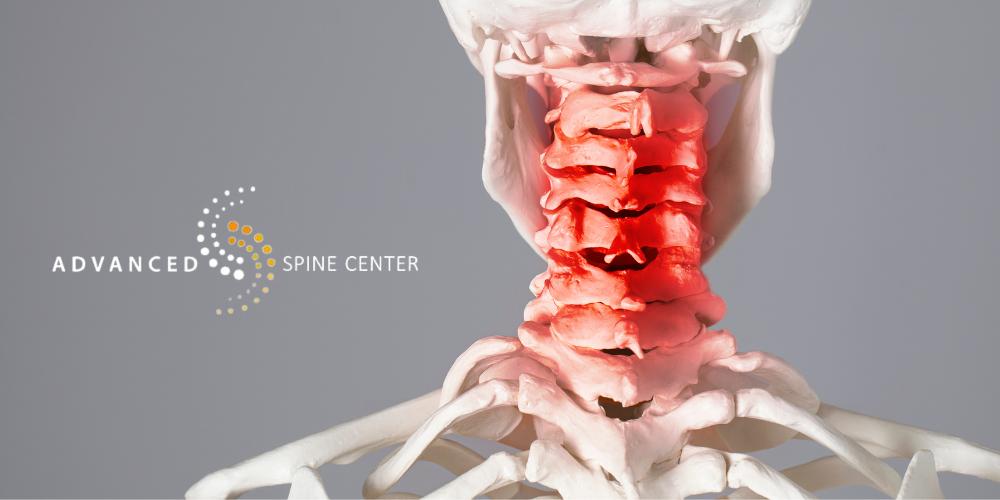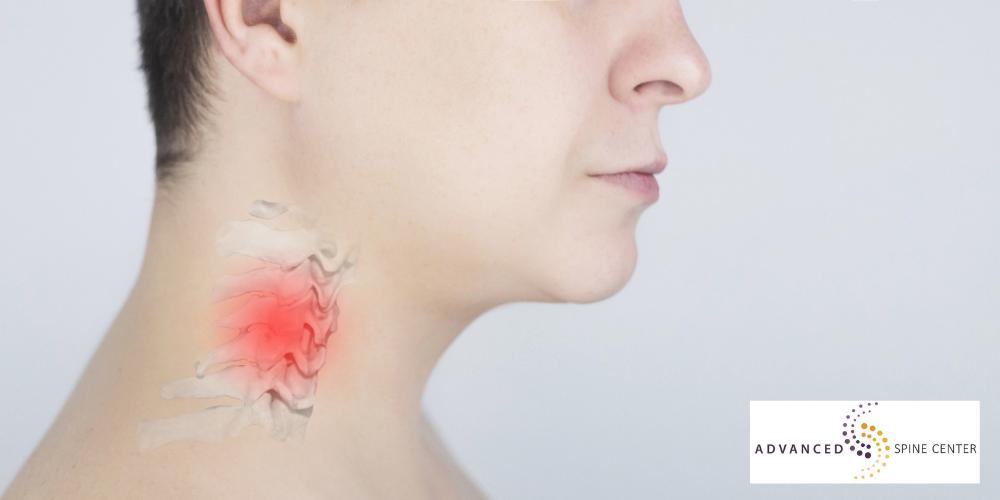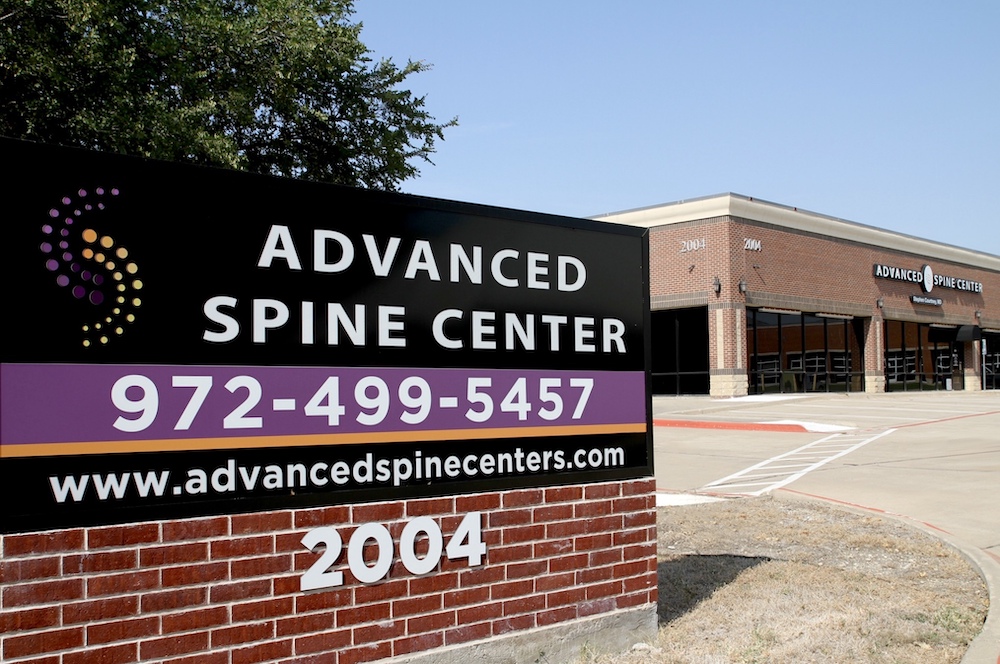Cervical Fusion Surgery Frisco, TX
Home > Orthopedic Spine Surgeon in Frisco, TX > Cervical Fusion Surgery Frisco, TX
Specialties
Cervical Fusion Surgeon in Frisco, TX
Neck pain, numbness, tingling, and radiating pain that affects the hands and arms is an unfortunate reality for many people. Nobody should have to live with pain that affects their daily lives and their ability to do the things they love. If conservative treatments haven’t alleviated your neck pain, you may be a candidate for cervical fusion surgery. Frisco residents suffering from upper back and neck pain can greatly benefit from this highly effective treatment option for various conditions affecting the cervical spine.
Dr. Stephen Courtney is a board-certified, fellowship-trained orthopedic spine surgeon in Frisco with over 20 years of experience helping patients achieve pain relief. When conservative options aren’t yielding the results you want, it may be time to consider cervical spinal fusion. To schedule an appointment with us about your pain, please call our office at 972-499-5457 or submit a form online.
What Is Cervical Fusion Surgery?

Cervical fusion surgery, also known as neck fusion surgery, is a procedure designed to fuse two or more neck vertebrae together to stabilize the spine and relieve pain caused by a variety of conditions.
During the surgery, the surgeon extracts the damaged intervertebral disc(s) between the affected vertebrae and replaces them with a bone graft or artificial implant. Over time, this graft fuses with the surrounding vertebrae, creating a solid structure that restricts movement at the fused segment.
Cervical fusion can be performed using various surgical techniques, with the most common being Anterior Cervical Discectomy and Fusion (ACDF) surgery.
What Is Anterior Cervical Discectomy and Fusion (ACDF) Surgery?
Anterior Cervical Discectomy and Fusion (ACDF) is one of the most frequently performed cervical fusion procedures. In this surgical approach, the surgeon makes an incision in the front of the neck to access the cervical spine. The damaged disc is removed, and a bone graft or implant is placed between the adjacent vertebrae. This procedure allows for easy visualization of the spine and minimizes disruption to surrounding tissues.
Fusion anterior cervical discectomy surgery is preferred when the cervical spine requires stabilization due to conditions such as herniated discs, degenerative disc disease, or spinal stenosis. It can relieve symptoms like neck pain, arm pain, and weakness caused by nerve compression.
When Do We Recommend Cervical Fusions?

Cervical fusion surgery is typically recommended when conservative treatments, such as physical therapy, pain medicines, and rest, have proven ineffective in managing symptoms. The decision to undergo cervical fusion is not taken lightly and is based on a thorough evaluation by a spine specialist, such as Dr. Courtney. Some common indications for cervical fusion include the following.
- Cervical herniated disc: This is when a disc in the cervical spine bulges or ruptures, pressing on nearby nerves and causing pain or weakness.
- Degenerative disc disease: The gradual wear and tear of cervical discs can lead to pain, instability, and the development of bone spurs.
- Spinal stenosis: Narrowing of the spinal canal can result in spinal cord compression or compression of nerve roots, causing pain and other symptoms.
- Spondylolisthesis: When one vertebra moves forward over another, causing instability and pain.
- Fractures or trauma: Severe fractures or traumatic injuries to the cervical spine may require fusion to stabilize the area.
What Conditions Can Cervical Fusions Treat?
Cervical fusion surgery is versatile and can address various conditions and issues affecting the cervical spine. Some of the specific conditions that cervical fusions can treat include:
- Cervical radiculopathy: A condition characterized by pain, weakness, or numbness radiating down the arm due to nerve compression.
- Myelopathy: Spinal cord compression in the cervical spine, leading to problems with coordination, strength, and balance.
- Cervical spondylosis: The natural degeneration of the cervical spine, resulting in pain and stiffness.
- Instability: Abnormal movement of vertebrae in the cervical spine, which can cause pain and neurological symptoms.
- Posterior facet syndrome: Pain arising from the small joints in the back of the spine.
- Failed previous surgery: In cases where prior neck surgeries have not provided relief or have resulted in complications.
It’s essential to consult with a Frisco spine specialist to decide if cervical fusion surgery is the appropriate treatment for your specific condition.
How to Prepare for Cervical Fusion
Preparation for cervical fusion surgery involves several steps to ensure a successful procedure and a smoother recovery process. Here are some key aspects to consider when preparing for cervical fusion.
Medical Evaluation: Your surgeon will conduct a thorough medical evaluation, including reviewing your medical history, performing physical examinations, and ordering imaging tests (e.g., X-rays, MRI, CT scans) to assess the extent of the cervical spine issue.
Communication: Open and honest communication with your surgeon is crucial. Discuss any pre-existing medical conditions, allergies, medications, or supplements you are taking. Follow your surgeon’s instructions regarding medication adjustments before surgery.
Lifestyle Adjustments: Leading up to surgery, maintaining a healthy lifestyle can significantly impact your recovery. This includes quitting smoking if you smoke, as smoking can hinder the fusion process. Additionally, maintaining a healthy diet and staying physically active within your limitations can promote better healing.
Support System: Arrange for a support system to assist you during the recovery period. You may require assistance with daily tasks, transportation to medical appointments, and emotional support during your rehabilitation.
Home Preparation: Prepare your home for post-surgery recovery by ensuring a safe and comfortable environment. Remove tripping hazards, secure handrails if necessary, and arrange sleeping arrangements on a ground-level floor if possible.
Discussion of Risks and Benefits: Engage in detailed discussions with your surgeon about the potential risks and benefits of the surgery. Understanding what to expect can alleviate anxiety and help you make an informed decision.
Pre-operative Instructions: Your surgeon will provide specific pre-operative instructions, which may include fasting before surgery, discontinuing certain medications, and showering with special antiseptic soap the night before the procedure.
What Is the Procedure for Cervical Fusion?
The cervical fusion procedure can vary depending on the surgical approach chosen by your surgeon. However, we will outline the general steps involved in ACDF surgery, which is the most common approach.
Anesthesia: The surgery begins with the administration of general anesthesia to ensure you are unconscious and feel no pain during the procedure.
Incision: The surgeon makes a small incision in the front of your neck, typically on the left or right side.
Disc Removal: Using surgical instruments and a microscope for precision, the surgeon removes the damaged disc(s) that are causing your symptoms. This alleviates pressure on nerves or the spinal cord.
Graft Placement: The surgeon then inserts a bone graft or artificial implant into the space previously occupied by the removed disc. The graft serves as a spacer and encourages bone growth, ultimately fusing the adjacent vertebrae together.
Stabilization: In some cases, the surgeon may use screws, plates, or other hardware to stabilize the vertebrae during the fusion process. This hardware provides additional support during the healing period.
Closure: After ensuring the graft is securely in place, the surgeon closes the incision with sutures or staples.
The duration of the surgery can vary but typically takes several hours. Your surgeon will provide more precise information about the procedure and the expected duration based on your specific case.
What Is Recovery Like After Cervical Fusion Surgery?

Recovery after cervical fusion surgery is a gradual process that requires patience and strict devotion to post-operative instructions. Here’s what you can expect during your recovery journey:
Hospital Stay: You will likely spend one to two days in the hospital after surgery for monitoring and pain management. During this time, medical professionals will assist with your initial mobility and ensure you can continue your recovery at home.
Pain Management: Pain is common after cervical fusion surgery. Your surgeon will likely prescribe pain medications for pain management. Be sure to take these medications as directed and report any unusual symptoms or adverse reactions.
Neck Brace or Collar: In some cases, you may be required to wear a neck brace or collar to support the cervical spine during the initial stages of healing. Follow your surgeon’s instructions regarding the use of this device.
Physical Therapy: Physical therapy is extremely important for recovery. A physical therapist will work with you to improve neck strength, flexibility, and posture. Exercises may initially be gentle and gradually progress in intensity.
Incision Care: Proper wound care is essential to prevent infection. Keep the incision clean and dry. Follow any specific care instructions your surgeon provides.
Follow-up Appointments: Attending follow-up appointments with your surgeon is crucial to monitor your progress. These appointments allow for adjustments to your treatment plan if needed.
Returning to Normal Activities: Your surgeon will provide guidance on when you can gradually resume daily activities, such as driving, lifting, and working. It’s crucial to follow these guidelines to avoid complications.
How Do I Sleep After Cervical Fusion Surgery?
Sleeping comfortably after cervical spine surgery can be a challenge. This is because the neck must be kept in a certain position. However, by making a few simple adjustments, you can sleep more comfortably while you recover from your cervical spine surgery. We outline some of these adjustments below.
Arrange pillows to provide support and maintain proper alignment of your head and neck. A firm pillow under your head and a softer one under your shoulders can help. Sleep on your back to minimize pressure on the cervical spine. Avoid sleeping on your stomach, as it can strain the neck.
If prescribed by your surgeon, wear your neck brace or collar as directed while sleeping to maintain proper neck alignment. If you have access to an adjustable bed, consider elevating the head to a comfortable angle. This can reduce strain on the neck and make sleeping more comfortable.
Take any prescribed pain medications as directed before bedtime to manage discomfort, which can interfere with sleep. Consult your surgeon before using sleep aids, as some medications may not be suitable during the early stages of recovery.
Remember that it may take time to find the most comfortable sleeping position, so be patient with yourself as you adjust to postoperative sleep.
Activity Restrictions After Neck Fusion Surgery
After cervical fusion surgery, there are specific activity restrictions that you must adhere to to ensure a successful recovery and avoid complications. These restrictions may include the following.
- Lifting heavy objects
- Bending at the waist and twisting the neck
- Driving
- Strenuous physical activities
- Work (depending on the nature of your job duties)
Above all, follow the advice and recommendations of your surgeon and physical therapist regarding your activity level and restrictions. Pushing yourself too soon can cause complications or slower healing.
What Are the Risks and Potential Complications of Cervical Fusions?
As with any surgical procedure, cervical spinal fusion carries certain risks and potential complications. It’s essential to be aware of these and discuss them with your surgeon before undergoing the procedure. Some common risks and complications include the following.
- Infection
- Excessive bleeding
- Damage to spinal nerves
- Hardware or bone graft complications
- Deep vein thrombosis
- Persistent or new pain
- Dysphagia (difficulty swallowing)
- Hoarse voice
- Fusion failure
- Anesthesia complications
It’s important to note that while these risks exist, most patients experience successful outcomes and significant pain relief following cervical fusion surgery. Dr. Courtney will take steps to minimize these risks and provide you with comprehensive preoperative and post-operative care.
What Is the Success Rate of Cervical Fusion Surgery?

The success rate of cervical fusion surgery varies depending on several factors, including the condition being treated, the surgical technique used, the surgeon’s expertise, and the patient’s overall health. However, cervical fusion surgery has a generally high success rate in terms of alleviating pain and improving spinal stability.
For conditions like herniated discs, degenerative disc disease, and spinal stenosis, cervical fusion can substantially relieve symptoms. Patients often experience improvements in neck pain, arm pain, and symptoms such as weakness or numbness in the arms or hands.
The success of fusion in achieving spinal stability also depends on factors such as the choice of graft material, hardware, and the patient’s commitment to post-operative rehabilitation.
Contact the Advanced Spine Center for Cervical Fusion in Frisco, TX
Cervical spinal fusion surgery is a valuable treatment option for individuals suffering from various cervical spine conditions or injuries that have not responded to conservative treatments. At the Advanced Spine Center, Dr. Stephen Courtney has decades of experience performing spine surgery to help patients with pain. Whether you have cervical spine, thoracic spine, or lumbar spine pain, we have treatment options for you. To schedule an appointment with us, please call our office at 972-499-5457 today.


